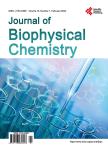Ultrafine Structure of Calcific Deposits Developed in Calcific Tendinopathy
钙化沉积的钙化腱末端病超细开发结构作者机构:TOSEDA s.r.o.PardubiceCzech Republic Faculty of Environmental StudiesUniversity of J.E.Purkyněústín.L.Czech Republic Laboratory of Renal Lithiasis ResearchUniversity Institute of Health Sciences Research(IUNICS)University of Balearic IslandsPalma of MallorcaSpain
出 版 物:《Journal of Biophysical Chemistry》 (生物物理化学(英文))
年 卷 期:2015年第6卷第2期
页 面:35-41页
基 金:This study was supported by a grant from the University of the Balearic Islands and by project CTQ2010-18271/PPQ from the Ministerio de Ciencia e Innovación(Gobierno de Espana),FEDER funds(European Union) the project grant 9/2011 from the Conselleria d’Educació,Cultura i Universitat(Govern de les Illes Balears)
主 题:Calcific Tendinopathy Carbonated Hydroxyapatite Posner’s Clusters Deposit Structure Formation Mechanism
摘 要:The ultrafine structure of tendons deposits formed in three patients, males aged 52 and 61 years and a female aged 71 years were evaluated by atomic force microscopy. Three distinctly different structures of deposit surface were identified: (i) compact, smooth and uneven surface composed of closely packed nanoparticles of diameter 30 nm;(ii) surfaces consisting of plate-like crystalline particles about 30 nm thick that formed larger entities divided by deep depressions;(iii) rough surface formed by individual or closely attached elongated needle-like particles with elliptical cross-section of diameter about 30 nm. These surface structures were developed by different formation mechanisms: (i) Aggregation of Posner’s clusters into nanoparticles formed on biological calcific able surfaces and in the bulk of body fluid surrounding the deposits that subsequently settled onto the deposit surface;(ii) Regular crystal growth on surface nuclei generated at low supersaturation of body fluid with respect to the phosphatic phase and/or in a narrow cavity containing a very limited volume of liquid;(iii) Solution mediated re-crystallization of the upper layers of a deposit or unstable crystalline growth governed by volume diffusion of building units to the particle tip. Small rods, 40 nm wide and from 100 to 300 nm long, with no apparent order were detected only on the surface of deposit formed in the female patient. These rods could be debris of collagen fibres that disintegrated into individual building units (macromolecules) with some showing breakdown into smaller fragments.



